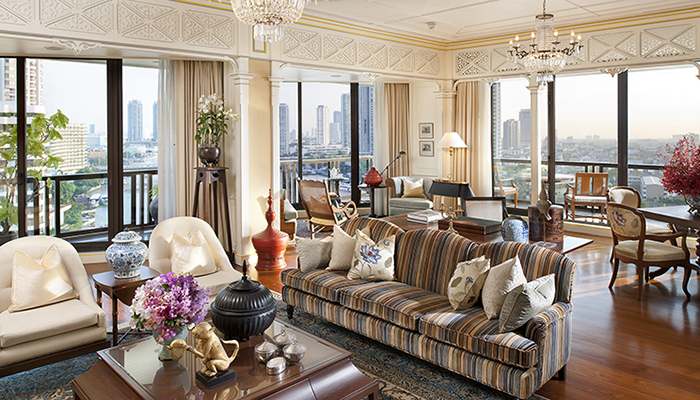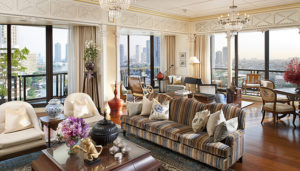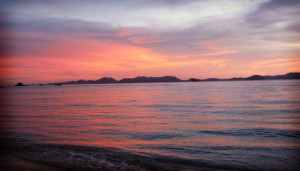
When a military coup seized control of Thailand’s government in May 2014, frightened travelers abandoned their vacation plans and tourism plummeted by about 20 percent in the Southeast Asian nation, according to the Tourism Authority of Thailand. A coup is no small matter and you should always monitor these types of situations carefully—the U.S. issued a travel alert—but many tourists don’t realize that the mostly peaceful country has seen this happen 19 times since 1932. Our Forbes Travel Guide editors recently ventured to Thailand and found that the reality is far less grim than one might expect for tourists: The nationwide curfew has been lifted and the English-speaking tourist police have about 500 offices throughout the country near major attractions. We consistently felt safe and never encountered a strong military presence (the only exception: we spotted a large group of soldiers in a park posing for photos). In fact, if we hadn’t known about the turmoil beforehand, we would never have guessed it when traveling through Bangkok, Chiang Mai and Krabi. Despite what you’ve heard, there’s a case to be made for visiting Thailand right now.
Score The Best Hotel Rooms
Tourism ranks as the No. 1 industry in the country, and more than 22 million tourists visit its shores each year, the Tourism Authority of Thailand reports. But tourism dropped as news of the coup spread. So if you travel to Bangkok now, you likely won’t have to angle for the best rooms in the country’s top hotels. Use this lull to nab one of Mandarin Oriental, Bangkok‘s popular and individually designed, author-inspired suites, which pay homage to past literary guests. Try the Jim Thompson Suite (while Thompson wasn’t a writer, the American is revered for reviving Thailand’s silk industry and was once an owner of the iconic hotel), which sits on a corner and offers views of the Chao Phraya River from the terrace and walls upholstered in crimson Thai silk. But our favorite is the stunning Somerset Maugham Suite, named for the Of Human Bondage author. A frequent backdrop for photo shoots, the suite has a dark, sumptuous bedroom with burgundy Art Deco-patterned wallpaper, side-by-side four-poster teak beds with bold gold accents and a dark red chaise lounge (though you’ll want to spread out in the marble-and-wood-filled bathroom’s clawfoot tub instead).
Across the river, book The Peninsula Bangkok’s luxurious Thai Suite, one of the hotel’s most-requested rooms. A triangular gilded Thai carving serves as the eye-catching headboard, gold silk covers the furniture and the floors are made of teak. You’ll also get your own pantry (so that a chef can make a meal for you in your room) and great water vistas (the suite is perched on the 36th floor).
For a hotel near the city center, check into The St. Regis Bangkok in the Ratchaprasong District. The hottest rooms are the Caroline Astor Suites—which take up the corners on the 16th through 22nd floors—because of their views of the city skyline and the golf course at The Royal Bangkok Sports Club. But we enjoyed the chic, contemporary St. Regis Suite draped in shades of gray that comes with a dining room, kitchen and living room that also looks out over the golf course. The best part is the suite’s massive black marble bathroom, with its deep-soaking tub, separate his-and-hers vanities and spacious glass-enclosed standalone shower. Shoppers will be drawn to Siam Kempinski Hotel Bangkok, which is hidden behind Siam Paragon, one of Southeast Asia’s largest malls. Our pick is the stylish two-story Duplex Suites, which have a bathroom on each floor; Thai art; understated, oversized lotus prints; and a patio that steps off right into the hotel’s saltwater pool. And fewer tourists means that you likely won’t get stuck on a waiting list for Siam Kempinski’s fantastic Sra Bua by Kiin Kiin, a restaurant that serves molecular Thai cuisine.
Get Access To Exclusive Activities
Chiang Mai boasts zip lining, hot-air balloons and hiking, but one of its biggest draws is the elephant camps that let you get up close to the animals. We headed to the Thai Elephant Conservation Center, the only government-owned elephant camp and one of the preeminent schools for pachyderm trainers (it’s also well-respected for its treatment of the animals). Usually, the select 10 to 15 slots for visitors to become mahouts (elephant trainers) for the day fill up quickly. During our time there, the camp was relatively empty, which we were told is a rarity. We did the one-day mahout training (two- and three-day programs are also available) and were assigned See Dor Dor (which means “come first”), a smart, gentle female elephant, and a seasoned mahout named Song, who was very hands-off. After donning the provided all-denim outfit—the thick material protects you from the creature’s surprisingly coarse neck hair—we lit incense at a shrine to pay respects to Ganesh (the Hindu god of elephants) and then sat down to learn about the animals and the Thai commands necessary to direct them. We had to muster our courage for the next part: a run and jump to mount the bareback elephant. The ride is nerve-racking at first—you have to hold your cheat sheet of Thai orders while gripping the animal’s ear to steady yourself. But after you get the hang of it, the ride is relaxing. That is, until it comes time to bathe the giant—she’ll drag you through a lake (bring a bathing suit). You’ll do some more trekking along trails, and the day ends with a graduation ceremony, where you’ll be presented with a mahout certificate.
In Chiang Mai, we made Anantara Chiang Mai Resort & Spa our base. The tranquil, minimalist hotel along the Mae Ping River puts you close to the action in Thailand’s second-largest city. One of the biggest attractions is the markets—the daily Night Bazaar is a five-minute walk from the hotel and the Saturday Wua Lai Market is 15 minutes away. Without the usual hordes of tourists, you’ll feel like a local perusing Wua Lai’s Thai silk scarves, hand-carved soaps that resemble flowers and other handicrafts while aromas from dishes like shumai (pork dumplings) or noodles with coriander, chile and spring onion tempt you.
During this low-tourism time, get a reprieve from the lines at the major wats (or temples), like Wat Phra That Doi Suthep, the most well known in Chiang Mai. Sitting on a hill 3,520 feet above sea level, the golden temple’s terrace gives you a scenic panorama of the area. Also worth a visit is Wat Phra Singh. You’ll marvel at the buildings’ ornate façades, which have details like Lanna-style tiered roofs and spike-toothed gold dragons with jade-colored scales slithering along the entryway banisters. Inside, you’ll find one of the religion’s most sacred images, Phra Singh, or the Lion Buddha. In Bangkok, visit Wat Pho to see the larger-than-life Reclining Buddha. The more than 150-foot-long golden statue is stretched on its side, with its hand propping up its head. Take a closer look at Buddha’s feet; the sizable soles are lined with mother-of-pearl.
Have Your Pick Of Beaches
As the country’s largest island, Phuket grabs the most attention, but we opted for the beach destination of Krabi. Aside from being less crowded than Phuket, the coastal southern town is a more peaceful spot, thanks to laws that prohibit Jet Skis (which means less noise) as well as beach umbrellas and loungers (it ensures unobstructed views of the sand, sunset and the striking limestone formations that cut through the Andaman Sea). Watching the sun sink into the water with a coconut shake or cocktail is a daily ritual among visitors.
For an ultra-exclusive beach getaway, book accommodations at Phulay Bay, a Ritz-Carlton Reserve. It won’t be hard to pry your eyes off the beach when you’re surrounded by a dazzling design that mixes contemporary Thai with Moroccan elements. Entering the luxury hotel is an experience unto itself: A narrow path between high, deep-purple walls (the hue, which represents wellness, dominates the color palette of the entire property) leads you to an infinity pool fronting the welcome pavilion, an open-air structure that looks like a Thai temple. To give it a double dose of ambience, plum walls holding more than 2,000 lights surround it all and booming Thai Enya-like music fills the air. You’ll have to step on the square tiles in the pool to get to the pavilion. Aside from the design, the all-villa hotel provides you with a 24-hour butler, a private plunge pool and an ESPA spa (the only other such spa in Thailand is in The Peninsula). Make the most of your stay and use Phulay Bay’s free boat shuttle to Hong Island, an in-demand day trip destination because of its green water lagoon. This parcel of paradise is just one of the reasons that you need to visit Thailand right now.


